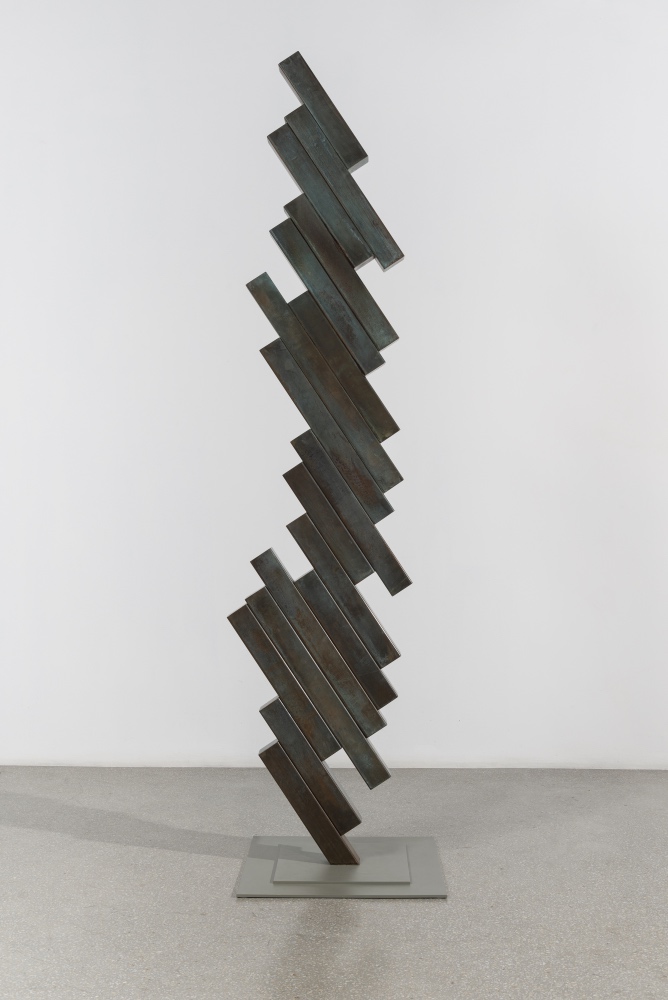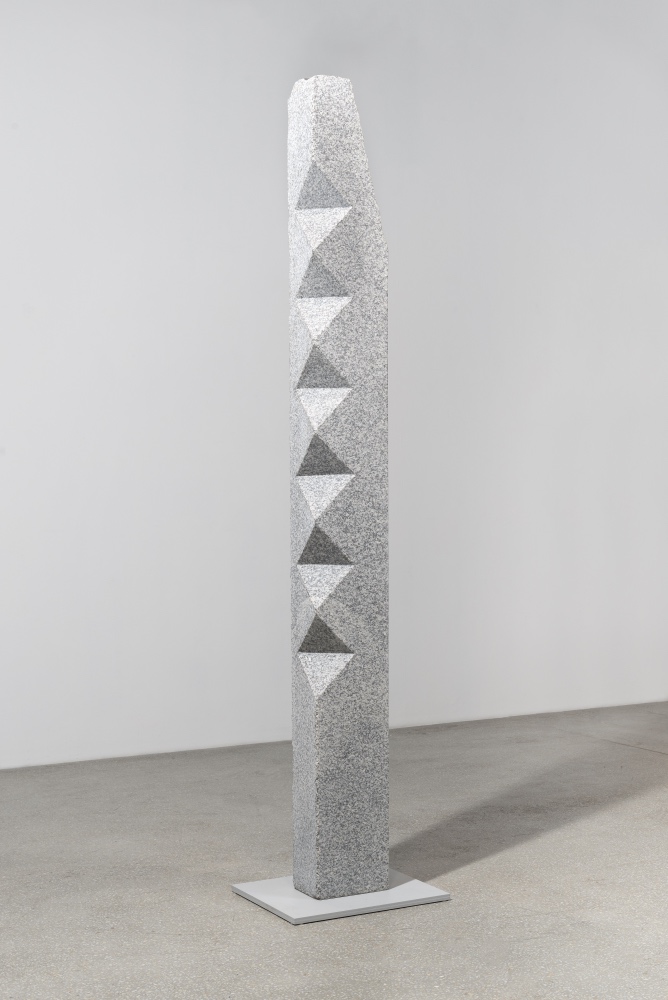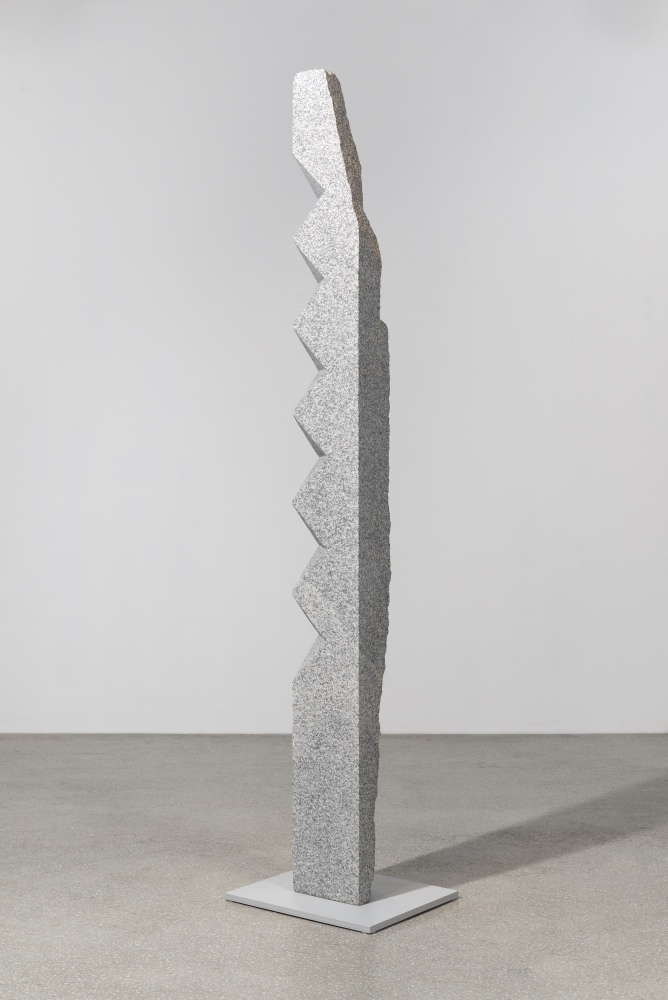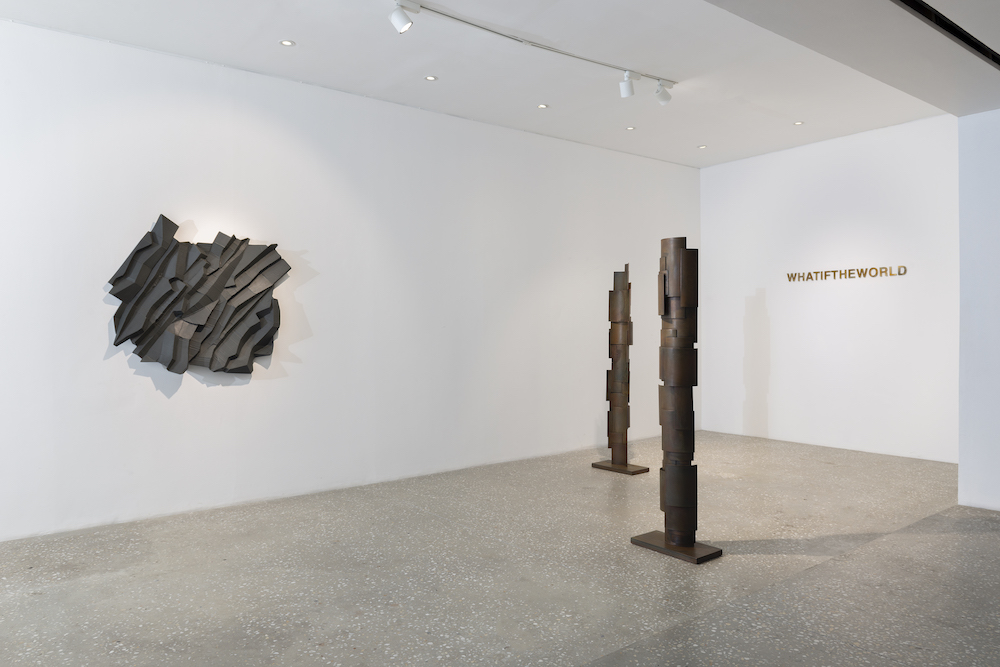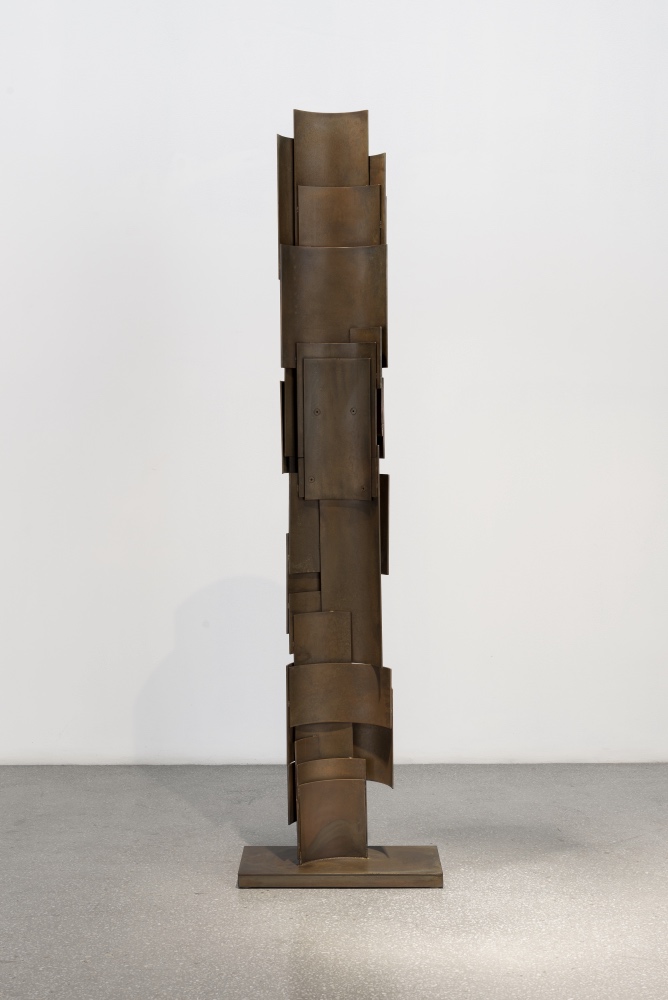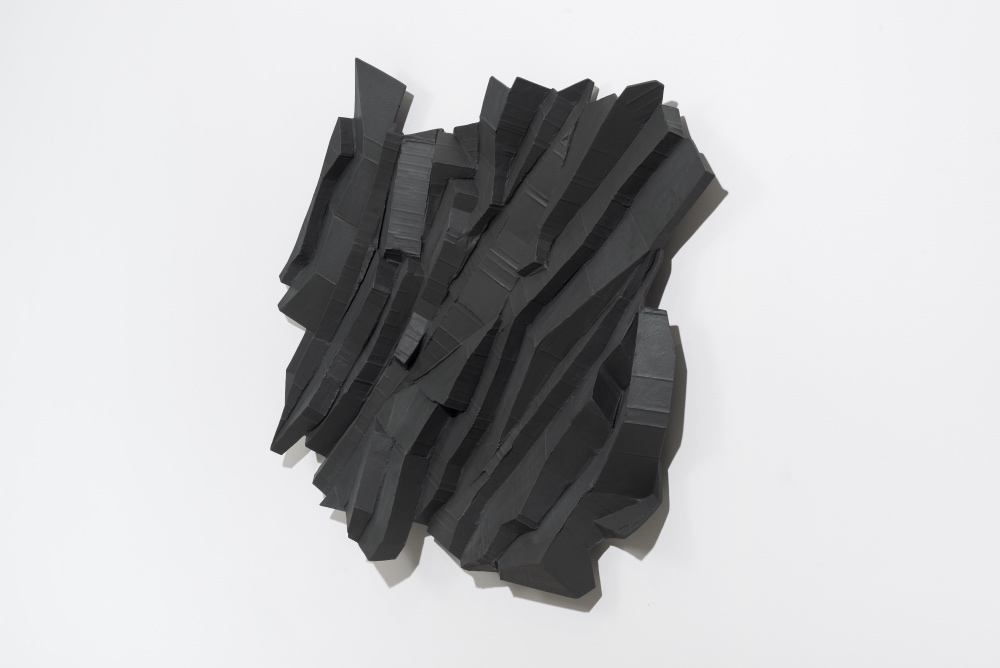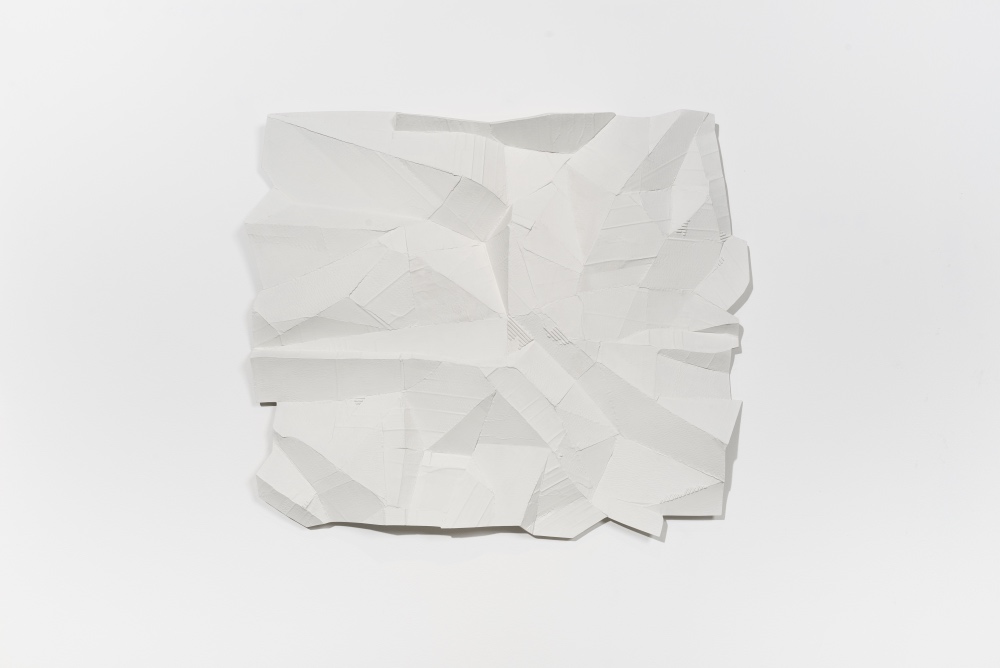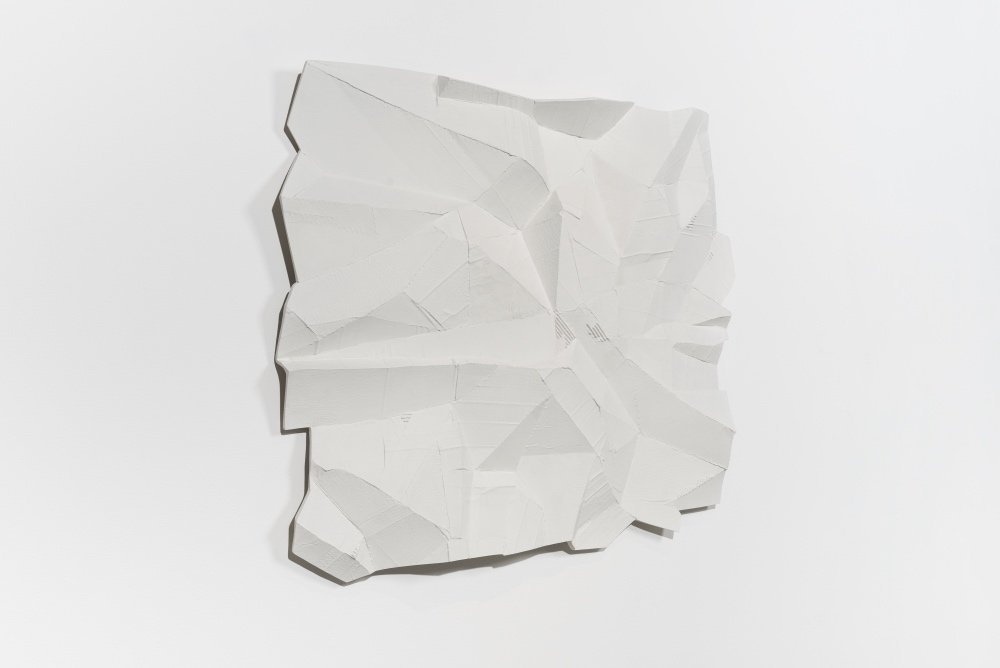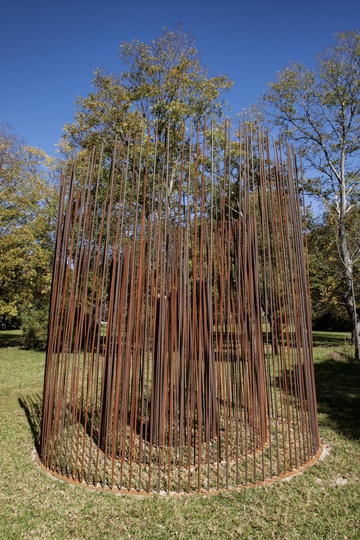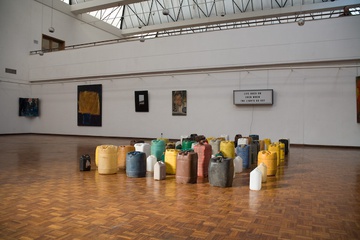Over and over considers the manifestation of human experience on the body over time. Through this exhibition, Mathison turns inwards, drawing on an established vocabulary of extracted and industrially manufactured materials such as sandstone, steel and granite to reflect on the emotional life of the individual as it relates to the collective.
Mathison’s totemic structures stand about as tall as he does. Their abstracted forms counter one another with smooth, even geometries, sharp parallel movement, organic textures and jagged, deliberate marking. The surfaces of the works are alternately weather-beaten and tightly arranged. Together, they resemble a gathering of shadows in sharp light, or unspeaking strangers who have arrived incidentally at the same destination.
In a smaller, mounted sculpture, a series of steel loopholes protrude from a makeshift raft of Malmesbury shale. The loopholes sit tightly and uncomfortably together facing different directions. Like the standing sculptures, they register an ominous and involuntary assembly. Consistent with his interest in the history and general utility of his materials, Mathison has drawn on his immediate environment in these works. Malmesbury shale is prominent along the rocky Cape Peninsula and is the oldest rock formation in the area. The quarried stone is commonly used for building and road works.
Elsewhere, a wall-mounted relief mimics the movement of naturally occurring rock formations, while also showing evidence of the moulding process through the corrugated pattern left by the cardboard that held the plaster. The relief is tactile and exposes its delicate handling in a markedly different way to earlier work by the artist, which, though formally described, often appears to have been unearthed or uncovered rather than composed.
Mathison’s practice is driven by the surface and texture of his surroundings. He engages the social and political resonances in the ground that has directed the fate of Sub-Saharan Africa. Through a constant play between natural and fabricated elements and processes, previous work addressed the fraught history of mining in Johannesburg, its residues and contemporary reverberations. States of Emergence (2017) looked at the journey of quarried stone from Zimbabwe, Namibia and Rustenburg in the North-West Province to Johannesburg as a way of thinking through the human and environmental implications of extraction and renewal. In his first exhibition at WHATIFTHEWORLD in 2014, he reconfigured familiar, utilitarian objects to signify labour, capital and structural inequality.
While retaining a commitment to the historical and contemporary narratives that accompany each of his materials, Mathison’s work has increasingly moved away from representational modes towards formal exploration. This gradual shift is matched with a more introspective approach in Over and over where ambiguous forms hint at elements in the natural and built environment but do not settle there. Fault, the largest of the standing works, reads less as a configuration of steel bars than a physical tremor. This hard, sharp movement jars with the soft, clean, facets and slightly stooped frame of Seed, a tall slab of light grey granite whose surface is immaculately articulated on one side and coarse and unworked on the other. The two mask-like parts of Split are smaller and made up of layered flat, semi-circular panels. These works also suggest a kind of movement, as if the panels have shifted into place over time, concealing and revealing, and, at some point, cleaving from one form into two. A stack of sandstone blocks stands crudely among this group with its surface irregularly hacked into. The structure remains upright in spite of the blows that its soft grain has weathered. Both the granite and sandstone were sourced from a stone-yard in Paarl that has provided material for monuments in the Cape since 1906.
Mathison’s standing sculptures occupy the same realm but seem isolated and at odds with one another. Each repeats in some aspect its own movement and shape but appears precarious in its posturing. The figures may be parts of one body or estranged individuals sharing a space. The tension within and between them proposes neither resolution nor despair.
More pronounced in these than in previous works is Mathison’s ability to express vulnerability and humanness through the processing of often harsh and unyielding natural and industrial materials without diminishing the charged narratives embedded within them.
Michele Mathison was born in South Africa in 1977 and raised in Zimbabwe. Through sculpture and installation, his work has consistently drawn from observations of daily, lived experience in order to interpret and understand the shifting dynamics of labour, cultivation and urban decay in Southern Africa.



